Wayne G. Brown – A Multi-dimensional Creativity
Part One of Two
By David P. Kozinski
When photographer Ron Howard and I visited Wayne G. Brown in his Rose Valley home recently, we didn’t realize it was his birthday. When I asked the artist about his birth he replied, “83 years ago today, in Philadelphia – Germantown Hospital.” Brown has been creating art – painting, sculpture and printmaking – most of those years. His output has been prolific, especially considering he had a full-time career in business that included administration, finance and marketing. He has been married to his wife, Elisabeth Jonsson Brown, since 1968.
Brown’s paintings range from representational portraits and landscapes, to abstract works that suggest favorite subjects, to pure abstractions. His acrylic landscape, “Country Road”, leads the viewer between fenced fields, past a profusion of red, pink and purple flowers, and on toward a pair of buildings that flank the road and are backed by a bank of dark trees and the hills beyond. Brown won First Prize in a members’ show at the Community Arts Center in Wallingford, Pa. for “Budapest”, an abstract work that suggests an aerial view of the city. He pointed out that the sinuous, blue band running down the middle of the painting is the Danube, “even though it looked pretty brown to me when I saw it.”
A graduate of William Penn Charter School, near Philadelphia’s Manayunk neighborhood, Brown applied and was accepted to the University of Pennsylvania and the College of William and Mary, but chose the University of North Carolina. He was somewhat familiar with the area because work had taken his father to Charlotte. Brown graduated in 1955 and attended Navy Officer Candidate School. With a smile, he recalled that, “I was trained to go to sea, but the Navy determined I had a poor sense of direction and parked me in Washington, D.C. for three years.” Brown remembers his service fondly, as he does most of his life’s experiences so far. “I’ve been lucky – affiliated with wonderful people all my life,” he said with enthusiasm.
He may not have gone to sea, but ships are depicted or hinted at in many of Brown’s paintings. His color choices and composition raise the work beyond the decorative and make them truly original. While the award-winning, “Building a Skyscraper”, is nominally about a construction project on land, it more than suggests the masts and rigging of a grand sailing ship. The painting whispers of Miró and even early Mondrian in its palette and exploration of a grid. The impressionistic, “Boatyard”, depicts what appears to be a commercial vessel in dry dock, with a body of water in the background and the suggestion of a city skyline beyond that. The ship’s green and orange prow juts into the foreground and into a jumble of scaffolding. The rust-orange, metallic barrel in the lower right enhances a sense of the heat and light of early afternoon.
Many of his paintings and wall sculptures reflect Brown’s extensive travels in a general way. Comprised mostly of baggage tags from Europe, North America and elsewhere, and topped by a smiling airline captain who could have popped straight out of a “Mad Men” ad campaign, the collage, “Flying Was Fun”, offers a slice of the artist’s personal history. The pastel colors of the domes, spires and a crenellated roof of “A Greek Town”, come from memories of travel, filtered through the artist’s imagination. Similarly, the psychedelic hues of the sky and the skyscrapers that stand before it in “Cityscene” are distillations of places that Brown has observed. A bridge at the far left of the picture guides the eye across the river in its foreground and into the shimmering, urban mélange.
Part 2 of this article will focus on Brown’s three-dimensional work. He creates “cityscapes” that are assemblages made from found and altered objects as well as free-standing sculptures.
Brown’s artistic passions are not limited to the visual. He is a writer who has frequently contributed poems and prose pieces to the monthly meetings of the Mad Poets Society’s Critique Circle and an avid consumer of classic music. He cites the works of Bach, Mozart and Beethoven; Romantic era composers like Mahler and Wagner; Moderns such as Stravinsky, and jazz as favorites, and in some cases, influences on his visual creations. He and Elisabeth enjoy grand opera and the Philadelphia Orchestra. Brown noted that on the Friday before our interview, he’d attended a performance at the Kimmel Center in Philadelphia that featured the 29-year-old pianist Yuja Wang performing Chopin. Wang’s technique and interpretive acumen are legend, as are her often revealing choices of stage attire. He mentioned his fortuitous auditing, years ago, of a master class given by the pianist and Curtis Institute of Music alumna Susan Starr. “She compared playing Mozart with, ‘lifting the keys instead of depressing them’,” Brown remembered with a connoisseur’s delight.
One of the assemblages, “Bach”, is rendered in five tones; red, orange, amber, yellow and black. The repeated and varied geometric figures – circles, squares, rectangles, etc., that pop up, and occasionally drill into, the work’s platform – interact in a way that suggests the contrapuntal nature of the great composer’s Baroque style.
Brown’s writing is a window into his personality that offers a view beyond his generally sunny disposition. His poem, “Seashore Nights” begins with the narrator walking down the beach to the edge of the ocean and feeling, “the pull on my ankles, the moon / tugging the water like a pulled rug.” Physical stability and the accompanying tranquility of the scene are undermined. in the second and concluding stanza. It starts, “The ocean sparkles in its blackness, / a terrifying darkness where you / are alone with the / whims of eternity.” The narrator then wonders, “what it’s like to swim to Lisbon,” and lists some of the sights along the way, including “nosy fish…and eerie flotsam…rusty ships with faint lights / and dozing sailors;” and “what it’s like to find lost hopes down deep…” At the end, we “arrive / at a bricked cellar, dim, / where fado songs mourn about / times at sea.” The mystery of the cellar as destination suggests a tomb, making the reference to fado – a song form of Portugal that often conveys yearning and irretrievable loss – all the more poignant.
Similarly, Brown’s poem, “Night Train,” depicts a nocturnal journey. This time, though, the trip ends not in mystery but horror. The train is described as a, “big iron bull,” and “the boss of darkness.” It bellows, “a sore-throated moan,” and, while idling to be cleaned, is seen, “panting, hissing, drooling oils…” The train resumes its journey, crossing a sea in a ferry’s hold and makes a stop in St. Moritz where, “partying riders / sing merry tunes, laugh drunkenly / as violins play.” This relatively light mood is shattered in the last stanza where the final stop is described. “A side door screeches open / disgorging piles of rags on legs…Shouts and curses welcome them / to Treblinka.”
On the surface, the contrast of such melancholy and tragic thoughts with the characteristic vitality and vibrant colors that characterize Brown’s visual art might seem contradictory. In the context of eight decades during which the artist has experienced much of the world, through business and travel, and has distilled his experiences in works that range in mood from the solemn to the whimsical, it seems perfectly natural.
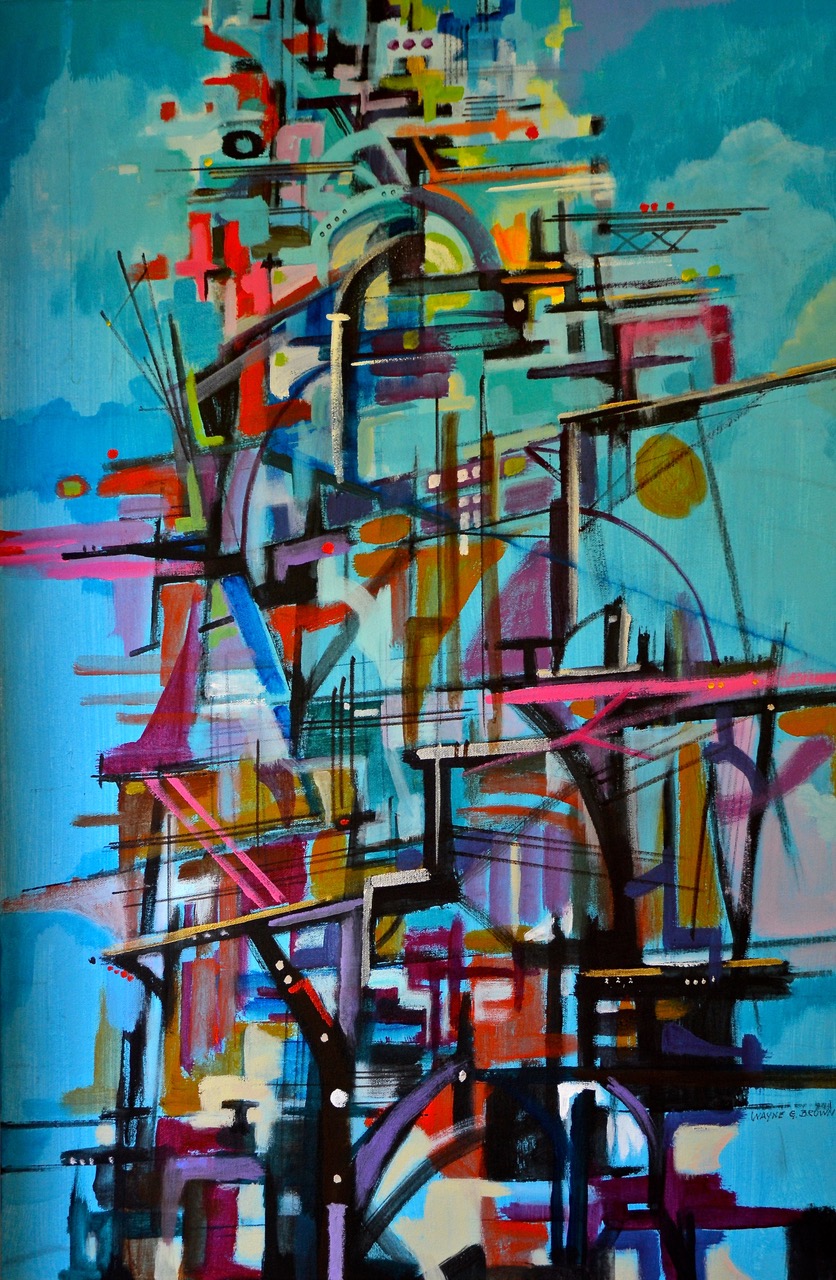

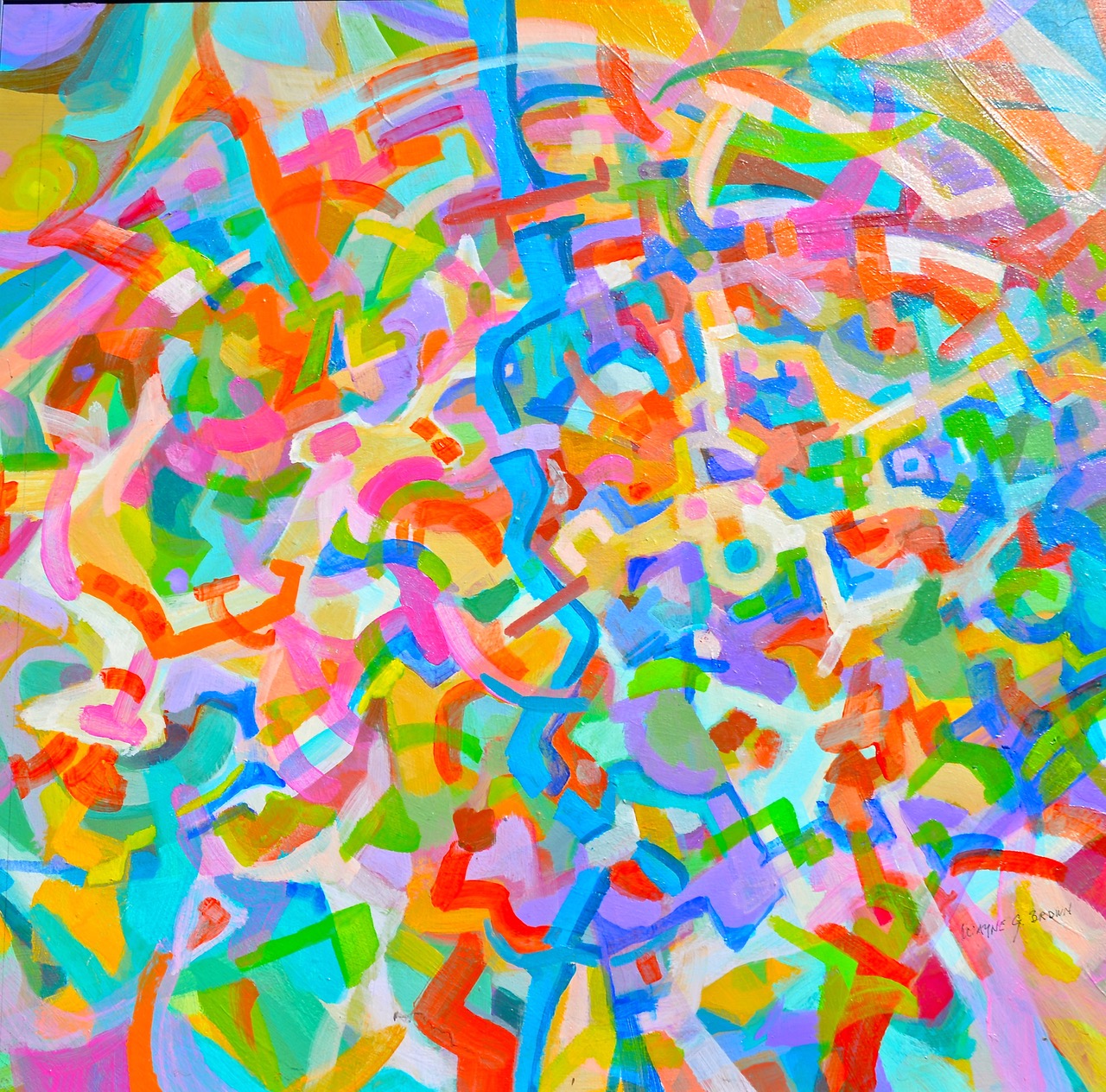
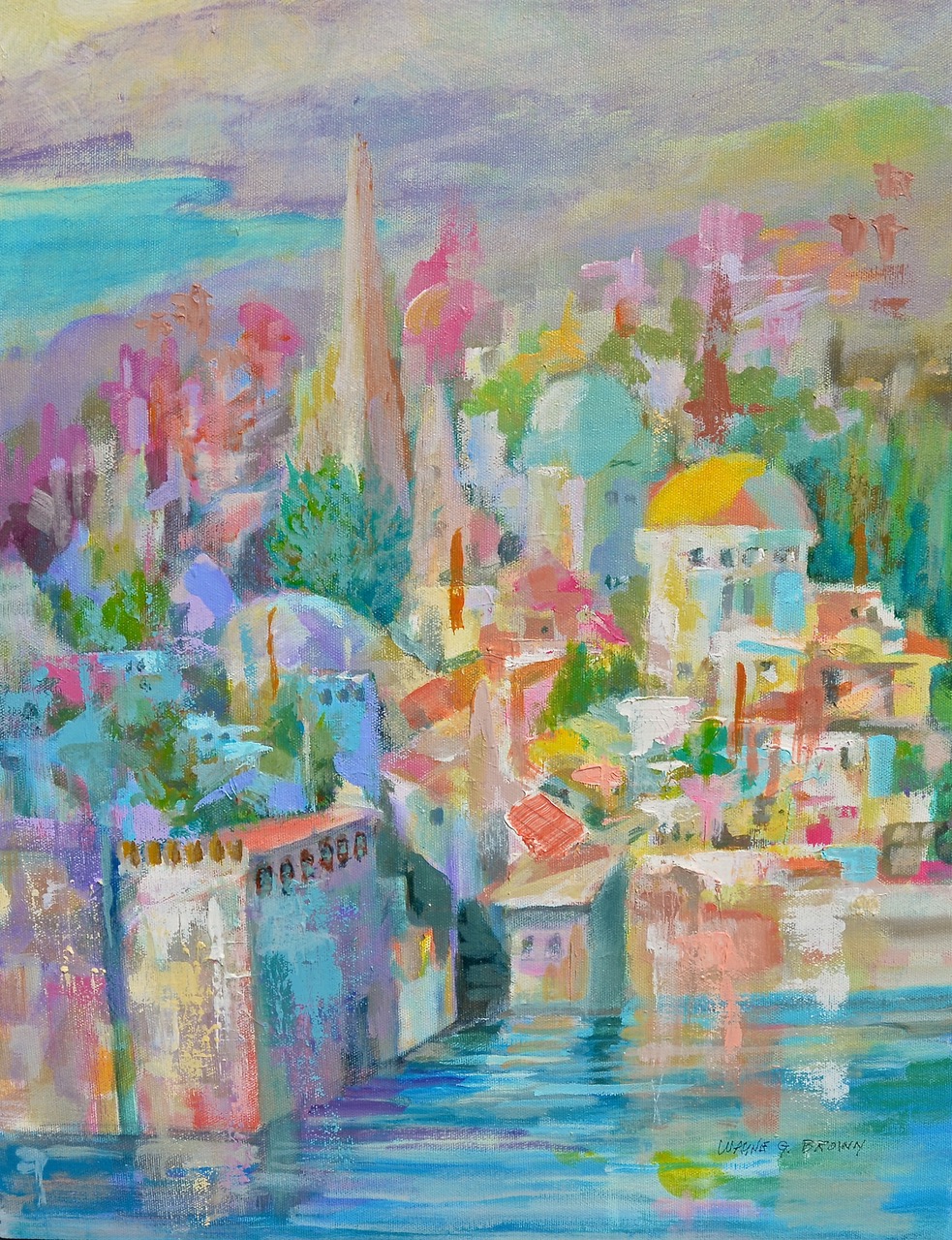
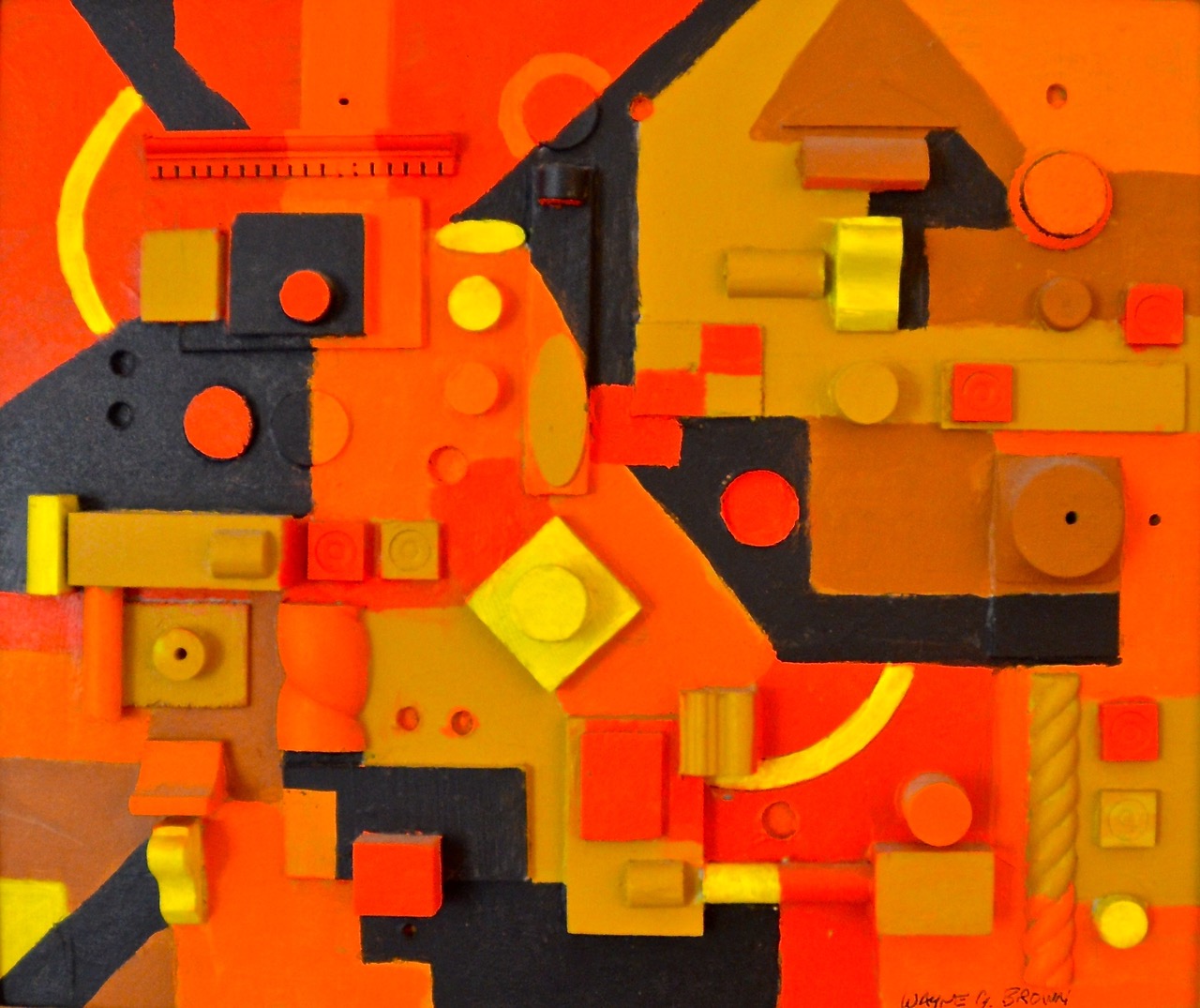
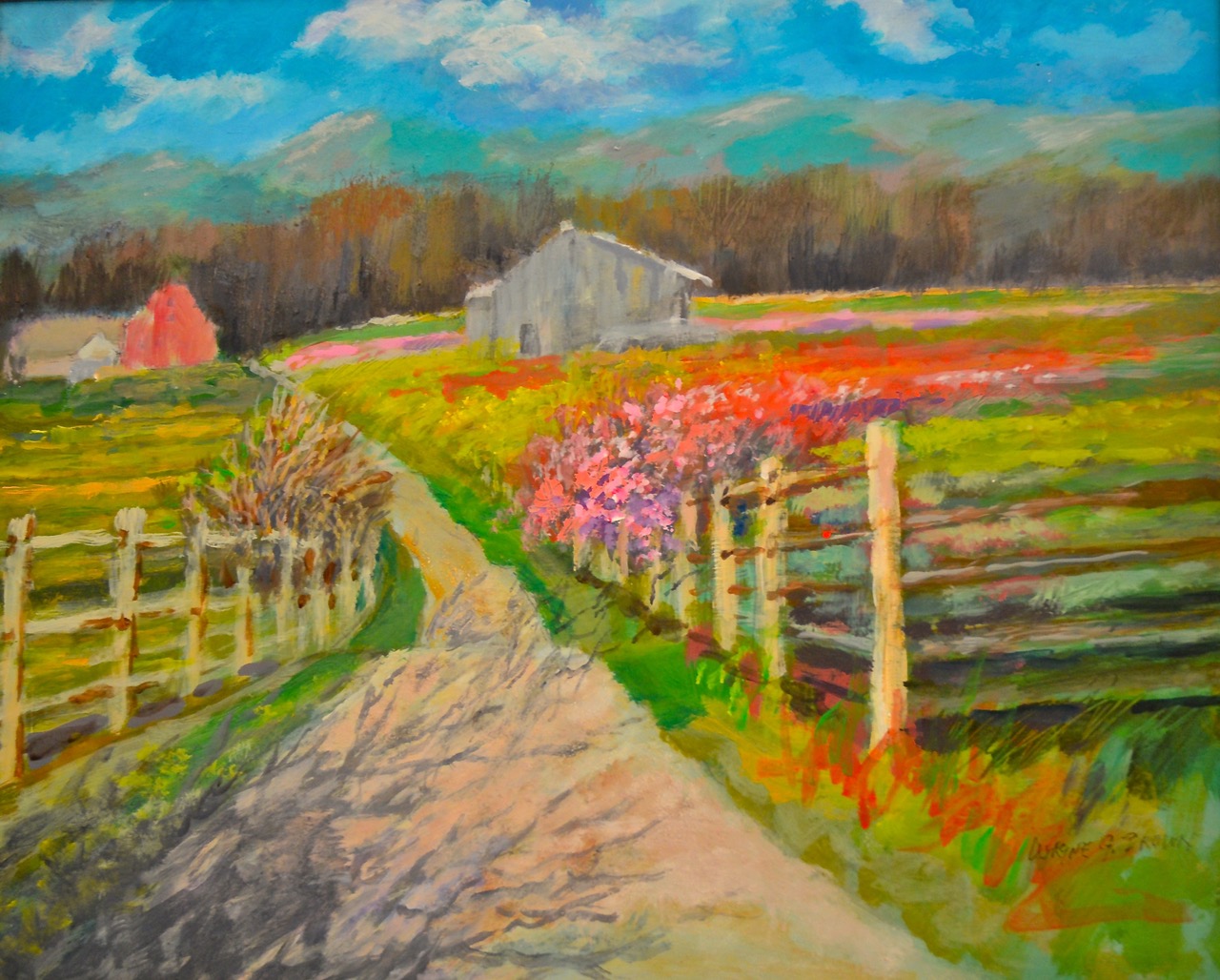
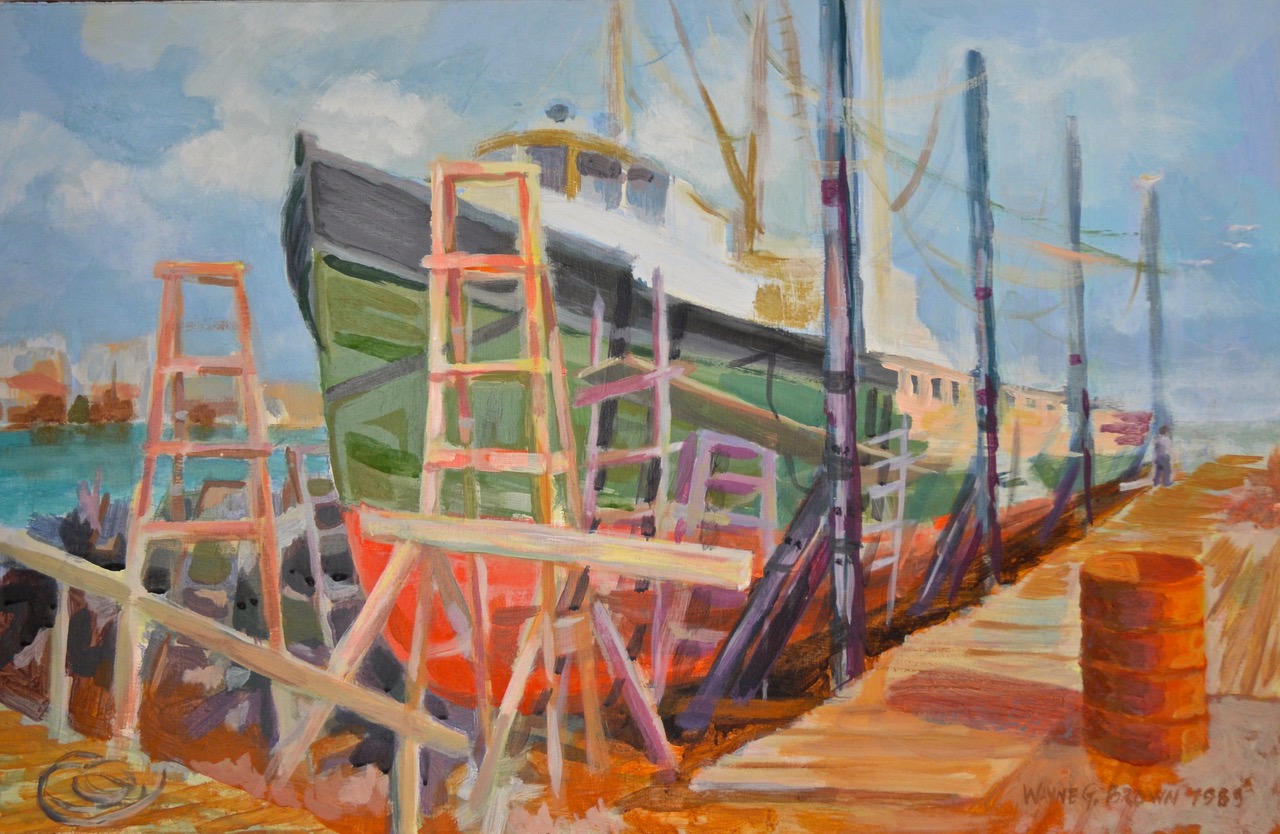
A Note About the Author: David P. Kozinski’s first full-length book of poems, Tripping Over Memorial Day was published by Kelsay Books. He won the Delaware Literary Connection’s 2015 spring poetry contest judged by B.J. Ward and received the Dogfish Head Poetry Prize, which included publication of his chapbook, Loopholes. Publications include Apiary, Cheat River Review, Fox Chase Review, Mad Poets Review, Philadelphia Stories, Rasputin, The Rathalla Review and Schuylkill Valley Journal. He is a board member of the Philadelphia Writers’ Conference and of the Manayunk-Roxborough Art Center. Kozinski is Arts Editor of Schuylkill Valley Journal Online (www.svjlit.com). He has conducted poetry workshops for teens at the Montgomery County (PA) Youth Center and at Roosevelt High School in Norristown, PA, for Expressive Path, a non-profit organization that encourages youth participation in the arts.
